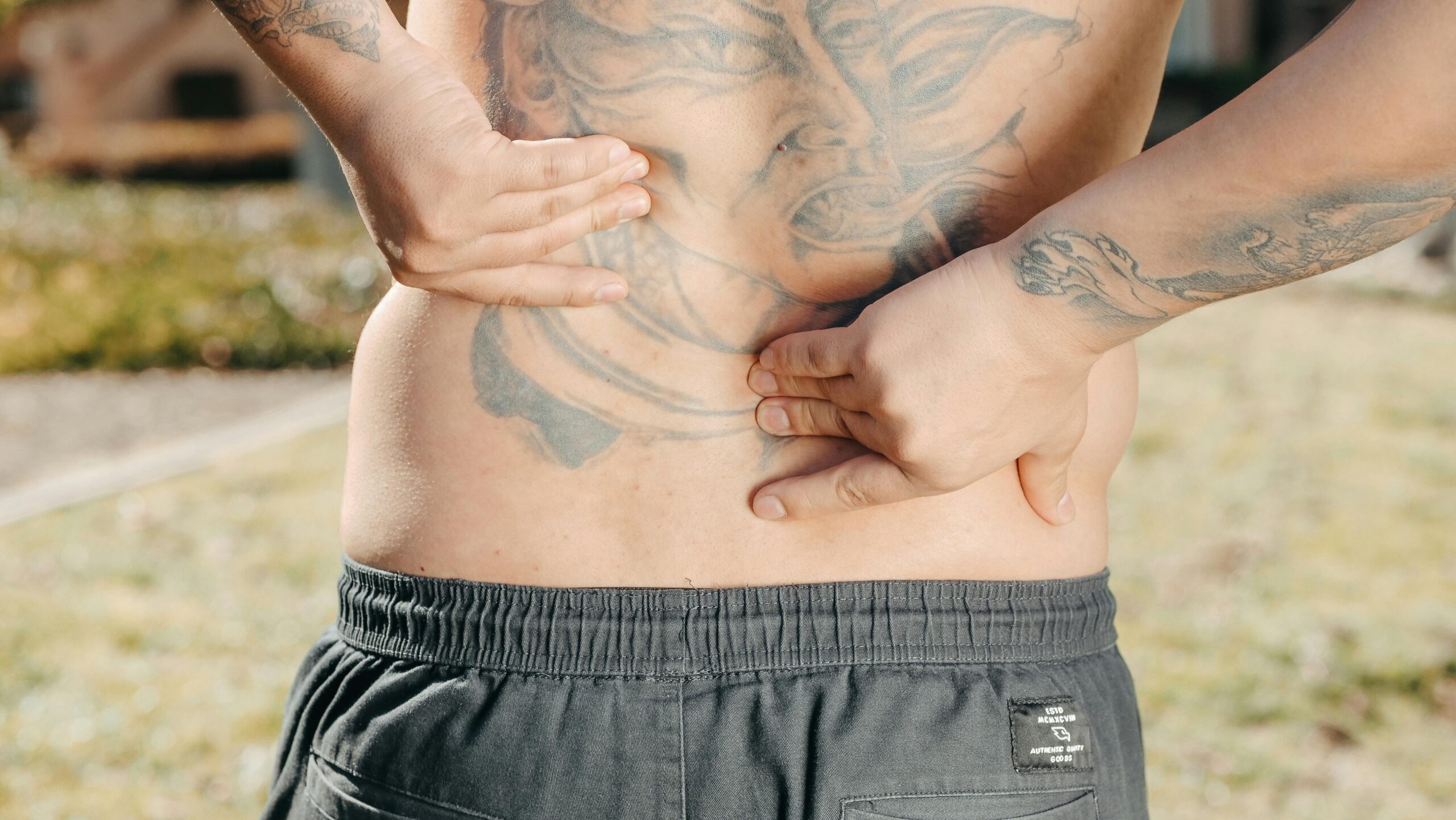You are enjoying an afternoon gardening or perhaps playing catch in the backyard with the kids or grandkids when you feel a sudden episode of lower back or neck pain. Is it a muscle strain, a joint sprain, or something more serious like a herniated or “slipped” disc?
Approximately 31 million Americans are experiencing back pain at any given time. Many of these episodes can be attributed to a “slipped” or herniated disc. But what exactly is a herniated disc, and how can the discs in our spines become injured?
![]() Our spine consists of 24 vertebrae stacked one on top of another. Between each of these bony blocks is a soft, rubbery cushion known as an intervertebral disc. We describe an intervertebral disc as being like a jelly donut; it has a fibrous outer capsule (annulus fibrosis) along with a gelatinous inner core (nucleus).
Our spine consists of 24 vertebrae stacked one on top of another. Between each of these bony blocks is a soft, rubbery cushion known as an intervertebral disc. We describe an intervertebral disc as being like a jelly donut; it has a fibrous outer capsule (annulus fibrosis) along with a gelatinous inner core (nucleus).![]()
![]() This combination of a rigid exterior and a soft interior allows it to distribute the forces we encounter in our everyday activities.
This combination of a rigid exterior and a soft interior allows it to distribute the forces we encounter in our everyday activities.
These intervertebral discs act as mini shock absorbers for our spines. Discs absorb the impact of numerous physical activities: running, bending, squatting, jumping, and more. Intervertebral discs also absorb forces associated with stationary positions such as sitting in front of a computer for longs periods.
So how do discs become injured? As part of the normal wear and tear of life, the outer fibrous capsule of the disc can sustain small tears. As these tears become more numerous or pronounced, they weaken the capsule, resulting in a bulging disc. If the damage to the capsule becomes significant, the inner gel or nucleus leaks out, resulting in a disc herniation.
Disc bulges can occur naturally as part of the aging process without producing any signs or symptoms. Disc herniations, on the other hand, often result in significant back pain and associated neurological symptoms. Why is that the case?
The mechanism of a disc herniation
The vertebrae and intervertebral discs surround and protect the spinal cord. The nerves exiting the spinal cord travel outward, innervating the right and left sides of the body. Injury to a disc can result in a bulge or herniation that pinches one of the nerves as it exits the spinal cord. This is known as a nerve impingement and will produce symptoms which correlate specifically with the level of the nerve involvement. Signs of a disc herniation causing nerve impingement might include:
- Arm or leg pain, often sharp and shooting with a cough, sneeze, or movement into a certain position.
- Weakness in the muscle controlled by the involved nerve.
- Paresthesia or numbness and tingling into the region of the body supplied by the involved nerve.
Certain conditions can increase the risk of developing disc herniations or disc injury. These include:
- Weight – Obesity and excess body weight can place increased stress on the discs of the spine, especially the lower back.
- Occupation – People with labor intense jobs have a greater risk of developing back problems. This includes repetitive lifting, pulling, pushing, twisting, bending at the waist, and leaning from side to side. Likewise, people who have sedentary jobs can be prone to developing disc injury due to prolonged postural dysfunction.
- Genetics – Some people inherit a predisposition to developing a disc herniation. If grandma, grandpa, mom, or dad had disc issues, you may be more at risk also.
- Smoking – Smoking decreases the blood supply and overall oxygenation to the disc, resulting in premature break down.
What treatment options are available for disc injuries?
- Rehabilitative exercises to strengthen the core (abdominal, lower back, and gluteal) as these stabilize the spine.
- Chiropractic manipulations to restore normal movement and relieve stress on the disc regions. Flexion/distraction is especially useful for disc injuries, as it has been shown in studies to reduce the pressure on the disc and relieve nerve compression.
- Therapeutic modalities such as electrical muscle stimulation to reduce muscle spasm and inflammation. Hot packs and cold packs to reduce muscle guarding and pain.
- Pain management options such as prescription medication or epidural steroid injection.
- Spinal surgery – always as a last resort if conservative care is unsuccessful.
What should you do if you suspect you have a disc injury?
Management of a disc herniation will depend on whether the condition is acute (sudden onset) or chronic (repeatedly occurring over time). It will also depend on the severity of symptoms and the size of the injury to the disc. If you are having back pain, you may want to see your doctor of chiropractic to determine if you have a disc herniation or if your low back pain has a different cause. In most cases, a physical exam and medical history are all that’s required for a diagnosis. If you have another condition or extensive injury is suspected, you may be referred out for a x-ray or MRI.
At Sturges Chiropractic & Sports Medicine, our office is well equipped to assess, diagnose, and treat various types of low back pain through gentle, conservative interventions that don’t include injections or surgery. Living in pain is not an option if you have disc-related pain. Contact our office to make your appointment today!

